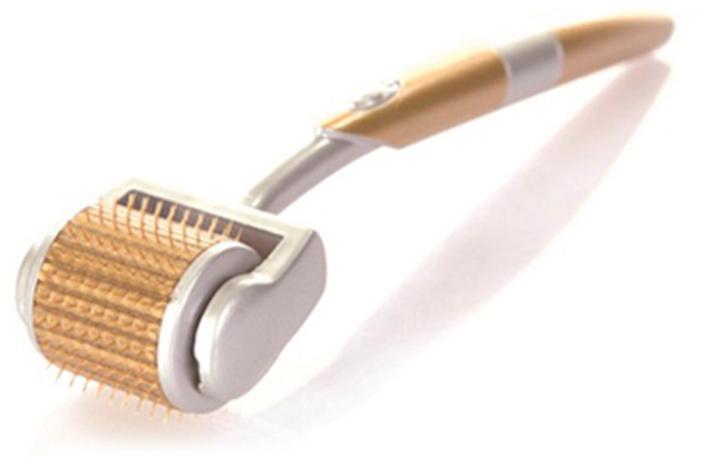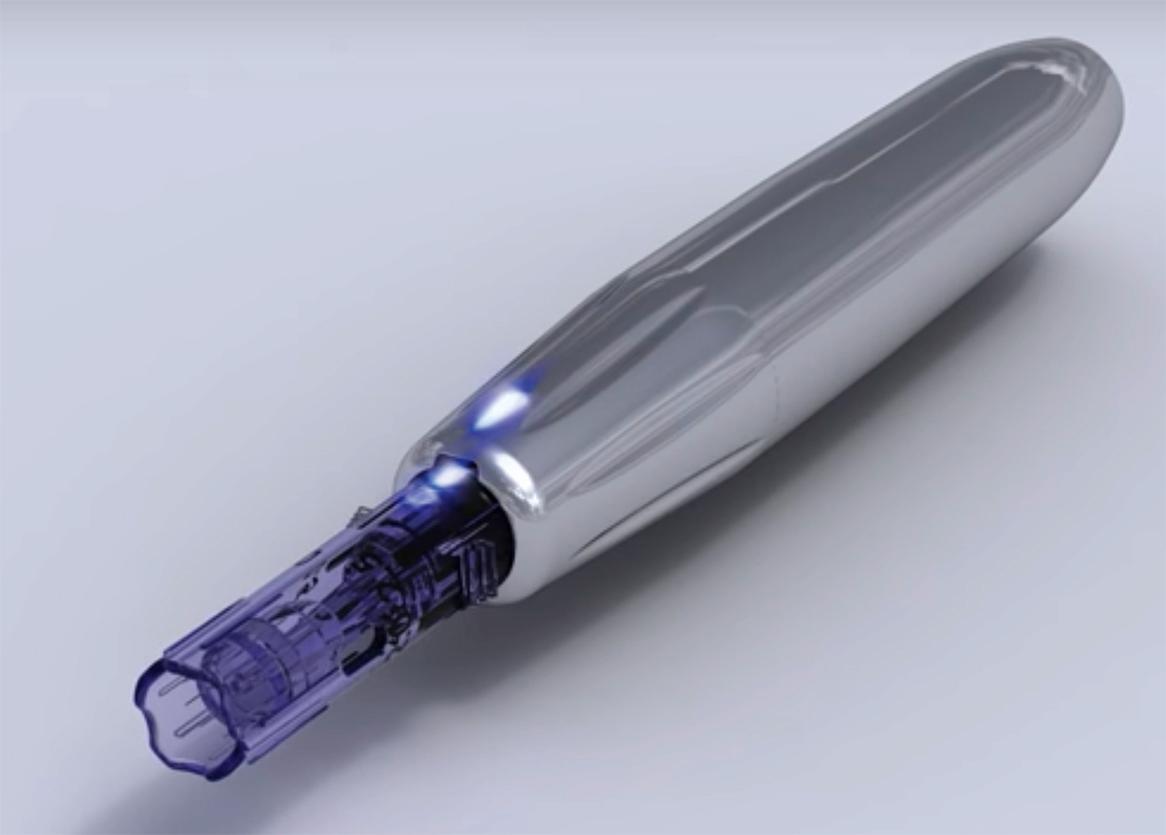Physical Address
304 North Cardinal St.
Dorchester Center, MA 02124
Postacne scarring is the most important sequelae for acne and can be psychologically traumatic to the patient. It can occur even in patients with milder degrees of acne. The pathogenesis of atrophic acne scarring is most likely related to inflammatory mediators and enzymatic degradation of collagen fibers and subcutaneous fat. Picking at acne lesions adds to scarring. Postacne pigmentation and pigmented scars are very common in acne patients with darker skin types. The pathogenesis of such hyperpigmentation is complex and seems to be related to many factors, including skin color and lesion trauma, and may also be related to the acne disease itself, especially the severity of inflammation. Scars following acne are usually atrophic and sometimes hypertrophic. Atrophic acne scars have been best described by Fabbrocini et al. as rolling scars, icepick scars, and superficial and deep boxcar scars ( Fig. 11.1 ). Icepick scars are narrow, sharply demarcated, V-shaped tracts, less than 2 mm in diameter, that extend into the deep dermis or even subcutaneous layer. Boxcar scars are wider (1–4 mm in diameter), U-shaped tracts, with sharp, vertical edges that extend 0.1 to 0.5 mm into the dermis. Rolling scars are characterized by tethering of the dermis to the subcutis. They are generally at least 4 mm in diameter, irregular, with a rolling or undulating appearance. Rolling scars are best visualized with indirect lighting to cast a shadow upon the skin, thus highlighting the scars. This classification helps in planning a treatment protocol for the scars. From simple excision; subcision; and a variety of punch techniques such as punch excision, punch grafting, and punch elevation, we have come a long way. Chemical peels, fractional and nonfractional ablative and nonablative lasers, microneedling, radiofrequency microneedling, fat grafts, and filler injections are other modalities of treatment for acne scars. Because one individual may have various forms of scars, no single modality of treatment helps all the scars. It is always a combination treatment that gives the best treatment outcome. Treatments also depend on the severity of acne scars. The most commonly used acne scar severity grading scale has been proposed by Goodman and Baron. Most techniques induce collagen remodeling to improve the scars. The degree of collagen remodeling seems to be proportional to the severity of the injury, and the result is hard to judge prospectively. The final result may not manifest until 4 to 6 months after treatment, and multiple therapies are often required.

A combination of microneedling and chemical peels can be done for the treatment of atrophic acne scars in dark skin with promising results. Although microneedling helps reduce atrophic boxcar and rolling scars, chemical peels will help in reducing postinflammatory hyperpigmentation (PIH). This combination has minimum risk of PIH or scarring in patients with dark skin.
Pioneered in 1995, Orentreich and Orentreich described subcision or dermal needling for scars. This approach involves pricking or puncturing the skin and then subcising the dermis with the needle to build up connective tissue beneath the scars. In 1997, Camirand and Doucet used a tattoo gun to “needle abrade” scars. Based on these principles, Fernandes and Signorini developed a new technology called microneedling or percutaneous collagen induction therapy to initiate the natural posttraumatic inflammatory cascade.
The manual drum-roller, also known as a dermaroller, is a handheld device equipped with medical-grade solid steel microneedles, projecting from a cylindrical roller. There are 24 circular arrays of eight needles, each located on the roller for a total of 192 needles. The needles vary in length ranging from 0.2 to 3 mm. The microneedles are synthesized by reactive ion etching techniques on silicon or medical-grade stainless steel. For adequate and uniform penetration, the needles are arranged at an angle of 15 degrees to the center of the instrument. The most preferred needle length for treating acne scars is 1.5 to 2 mm. The depth of penetration varies from 0.1 to 1.3 mm depending on the pressure and extent of skin stretching. The instrument is presterilized by gamma irradiation ( Fig. 11.2 ).

The other microneedling device that is gaining more popularity now is the electric-powered pen, which can be either operated with a battery pack or an alternating current power cord. When used with corded power, the device speed can be adjusted, ranging from 10,250 to 23,750 rpm. With battery power, the device speed is fixed at 13,500 rpm. Sterile disposable needle cartridges are made of 12 array count/32 gauge and 36 array count/30 gauge. Skin on the forehead is treated with needle depths ranging from 0.5 to 1.0 mm, whereas on the rest of the face, needle depths of 1.5 to 3.0 mm are preferred. Thicker or more fibrotic skin is usually treated with deeper needle depths ( Fig. 11.3 and Box 11.1 ).

Operating speeds can be easily adjusted.
Penetration depth is uniform because it does not depend on manual pressure.
Small focal scars such as varicella scar or scars on the upper lip can be treated easily.
Needle depth can be altered on various parts of the face using the same cartridge.
There is no risk of a tram-track appearance, which can sometimes occur with manual microneedling devices.
Microneedling involves the use of a handheld rolling instrument or electric-powered pens with tiny needles that create multiple superficial puncture wounds in the skin until fine pinpoint bleeding is achieved. The tiny microinjuries in the upper dermis release numerous growth factors, such as fibroblast growth factor, platelet-derived growth factor, and transforming growth factors alpha and beta, which all facilitate the production and propagation of intercellular matrix proteins. The fibroblasts line up along the axis of the fibronectin matrix, and it is here that they synthesize collagen and elastin. Collagen type III is the dominant form in the early wound-healing phase. Fibroblast collagen synthesis causes tissue remodeling over the next few months. Collagen type III is gradually replaced by collagen I over a period of 1 year or more. Scar collagen synthesis related to thermal injury involves upregulation of TGF-β1 and β2, whereas natural collagen synthesis after microneedling is related to upregulation of TGF-β3.
Liebl et al. have proposed another hypothesis to explain how microneedling works. When new wounds are formed in microneedling, the cells create a “demarcation current” that is further increased by the needles’ own electric potential. This demarcation current (also called bioelectricity ) triggers a cascade of growth factors that stimulate the healing phase and help in the proliferation and synthesis of collagen fibers.
In a study done by Fernandes et al., histological examination showed thicker skin, with greatly increased collagen type I and type III deposition and significantly more elastin, but otherwise was unremarkable from normal skin. Type VII collagen, which is the main component of anchoring fibrils, also increases significantly. The collagen bundles are laid down in a normal lattice pattern rather than in parallel arrangement.
Aust et al. reported a considerable increase in collagen and elastin deposition at 6 months postprocedure. The epidermis showed 40% thickening of the stratum spinosum and normal rete ridges at 1 year postoperatively.
Become a Clinical Tree membership for Full access and enjoy Unlimited articles
If you are a member. Log in here